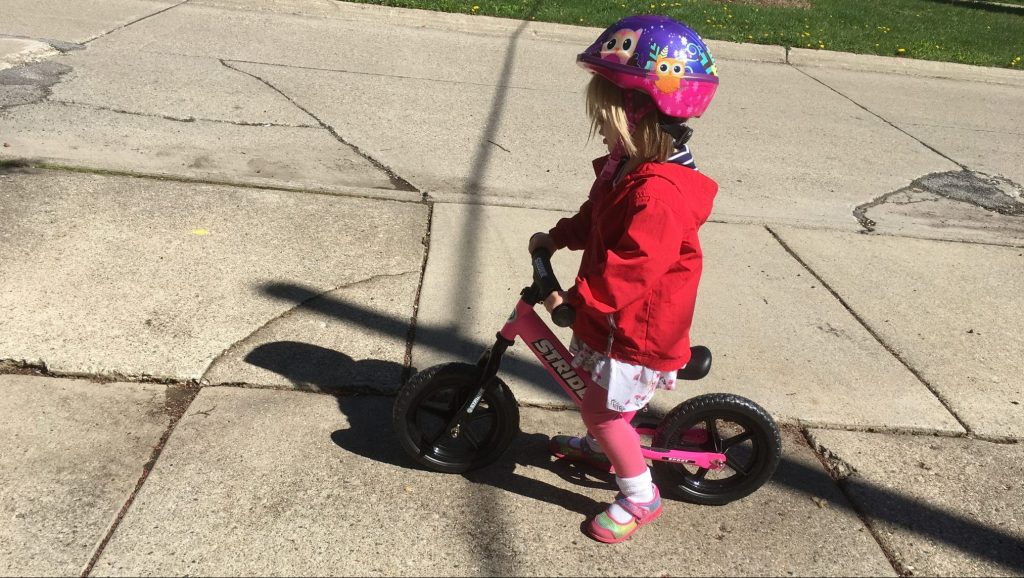
We bought our daughter a new Strider bike for her upcoming birthday. These bikes have no pedals, and they teach kids how to balance and use their bodies to move the bike and steer. The “Learn to Ride Guide” sets out “four essential steps” to ensure your child will ride successfully:
- Adjusting the bike properly to fit the child.
- Being a cheerleader, not a coach.
- Letting the child set the pace.
- Supporting the child — NOT the bike!
As a reading and writing workshop teacher, I really fell in love with this guide, as these four essential steps could inform what we do in a workshop classroom.
Adjust the Teaching to Fit the Student
Conferring with kids is basically adjusting your teaching to meet the students where they are.
Using formative assessment tools, like a quick exit ticket, you can adjust your entire lesson. And after looking at class writing samples, you can decide if the majority of students actually need that mini-lesson on punctuation–or if you can move on to something else.
Know When to Cheer and When to Coach
As a literacy teacher, you are so many things at different times, and for different students.
- Sometimes you are a coach, honing in on specific skills that your students need and explicitly teaching them, while giving them drills that will help strengthen the skills.
- Sometimes you are a cheerleader, praising what students are doing well, and lifting them up when they are being too hard on themselves or just not getting it–yet.
- Sometimes you are a teammate, sharing in the discovery and laughter of the class.
- Sometimes you are a spectator, observing in the stands and letting the writing and reading play out.
- Sometimes you are the referee, making sure the rules of the workshop classroom are being followed.
Let the Students Set the Pace
There has to be some level of commitment on the part of the student with the work that you do in a classroom. I think this is where choice comes into play.
Giving students choice about their writing topics, and in the titles or genres they read, allows students to set their own pace. Even giving them options in when assignments are due, or in how they can demonstrate their learning, can help students set their own timetable and be in control of their learning.
Support the Writer and Reader, Not the Writing and Book
Teachers teach children, not content. When you support the student, and the content comes second, you can really make a difference in the life of that student. This doesn’t just mean forming a relationship with each student; it means deciding what they need next in that conference or small group situation.
Each new skill our students and children learn has to be practiced. As teachers and parents we need to be there for our kids–but we also need to know when to take a step back, and let them go it alone. If we keep these four essential steps in mind, we can help kids become independent, skilled writers and readers on the road of life!
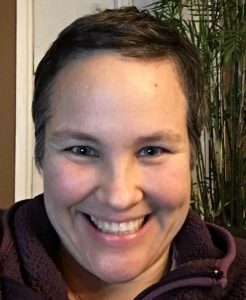 Caroline Thompson (@TeacherThompson) taught middle school ELA for twelve years in Lake Orion before becoming a stay-at-home mom. She supports AARI teachers for Oakland Schools as an independent literacy consultant in the areas of digital media, professional development, and non-fiction resources. Caroline is a Reading and Writing Workshop advocate, a 2008 Oakland Writing Project Teacher Consultant, and a 2009 Oakland County Outstanding Teacher of the Year Nominee. She has a BA in English from Michigan State University and a Masters in the Art of Teaching Reading from Oakland University. She lives in Berkley, Michigan with her husband and their three year old daughter.
Caroline Thompson (@TeacherThompson) taught middle school ELA for twelve years in Lake Orion before becoming a stay-at-home mom. She supports AARI teachers for Oakland Schools as an independent literacy consultant in the areas of digital media, professional development, and non-fiction resources. Caroline is a Reading and Writing Workshop advocate, a 2008 Oakland Writing Project Teacher Consultant, and a 2009 Oakland County Outstanding Teacher of the Year Nominee. She has a BA in English from Michigan State University and a Masters in the Art of Teaching Reading from Oakland University. She lives in Berkley, Michigan with her husband and their three year old daughter.

 I recently had the opportunity to work with a teacher on a unit of study. I went into the experience knowing that I was going to take on the role of an instructional coach, which means I would assist the teacher to improve instruction and outcomes.
I recently had the opportunity to work with a teacher on a unit of study. I went into the experience knowing that I was going to take on the role of an instructional coach, which means I would assist the teacher to improve instruction and outcomes. Many other things play into a strong workshop classroom: classroom culture, student-teacher relationships, grading, feedback, and exemplars, to name a few. In my coaching, I began to model a classroom that ran like my own workshop classroom, with all of these structures in place.
Many other things play into a strong workshop classroom: classroom culture, student-teacher relationships, grading, feedback, and exemplars, to name a few. In my coaching, I began to model a classroom that ran like my own workshop classroom, with all of these structures in place. Amy Gurney (
Amy Gurney (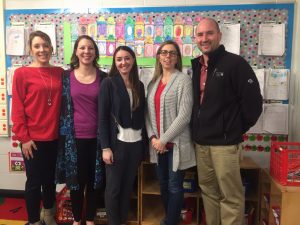

 Rick Joseph (
Rick Joseph ( One of the best parts of being a teacher is that I’m always learning. Every year, I learn more about pedagogy, reading, and writing, so I know with one hundred percent certainty that I am not the same teacher I was when I started. I love the learning process and I wouldn’t change it for a thing, but every once in a while I can’t help but think that if I could travel back in time, I’d love to share some much-needed guidance with myself as a first-year teacher.
One of the best parts of being a teacher is that I’m always learning. Every year, I learn more about pedagogy, reading, and writing, so I know with one hundred percent certainty that I am not the same teacher I was when I started. I love the learning process and I wouldn’t change it for a thing, but every once in a while I can’t help but think that if I could travel back in time, I’d love to share some much-needed guidance with myself as a first-year teacher. skill we learn? That’s exhausting – and unrealistic! If I want to enforce the idea that writers are always learning, why on Earth was I always expecting myself to write the “how-to” examples of “good” writing?
skill we learn? That’s exhausting – and unrealistic! If I want to enforce the idea that writers are always learning, why on Earth was I always expecting myself to write the “how-to” examples of “good” writing?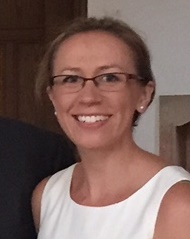 Megan Kortlandt (
Megan Kortlandt ( A few years back I recognized that I was getting stale—not bad, just not good—and that I was becoming calcified in my self-assurance. I don’t remember an exact moment when I noticed it. In any case, I didn’t want to become the teacher who boasts 20 years of experience, when he really means two years of experience repeated 10 times. I looked around until I found a seminar given by Columbia University and
A few years back I recognized that I was getting stale—not bad, just not good—and that I was becoming calcified in my self-assurance. I don’t remember an exact moment when I noticed it. In any case, I didn’t want to become the teacher who boasts 20 years of experience, when he really means two years of experience repeated 10 times. I looked around until I found a seminar given by Columbia University and  This year found me at
This year found me at 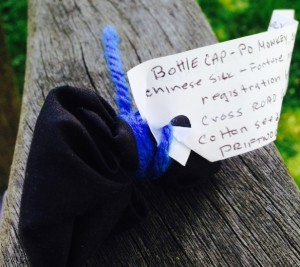
 Rick Kreinbring teaches English at Avondale High School in Auburn Hills, Michigan. His current assignments include teaching AP Language and Composition and AP Literature and Composition. He is a member of a
Rick Kreinbring teaches English at Avondale High School in Auburn Hills, Michigan. His current assignments include teaching AP Language and Composition and AP Literature and Composition. He is a member of a  The writer’s notebook is almost a sacred, mythical element of the writer’s workshop. It is where students’ writing lives take shape and are documented over the course of a year. In my classroom, the writer’s notebook held everything, and I mean EVERYTHING. Any paper I handed out was immediately taped or glued into the notebook, even if it had to be turned on its side or folded over two times. The writer’s notebook was our textbook. So when I heard each one of my students would be getting a Chromebook, I was excited about the possibilities and what that could mean for student writing. But what nagged at me was the loss of the traditional, tangible writer’s notebook.
The writer’s notebook is almost a sacred, mythical element of the writer’s workshop. It is where students’ writing lives take shape and are documented over the course of a year. In my classroom, the writer’s notebook held everything, and I mean EVERYTHING. Any paper I handed out was immediately taped or glued into the notebook, even if it had to be turned on its side or folded over two times. The writer’s notebook was our textbook. So when I heard each one of my students would be getting a Chromebook, I was excited about the possibilities and what that could mean for student writing. But what nagged at me was the loss of the traditional, tangible writer’s notebook. Instead of kids bringing their notebooks to one another and reluctantly allowing a partner to write on their prized draft, kids are sharing documents with one another and setting the editing level based on their comfort, with many choosing to only allow their partners to comment on a document. They no longer have to worry that someone is going to “mess up” their paper. They can simply focus on the comments, and especially relish hitting the “Resolve” button when they have revised something. I think it’s more than just reading the comments and making changes, though; kids are having conversations via their comments about writing as well as having conversations about their writing out loud. The conversations about writing are multilayered. If you’ve ever seen a teen text and talk to someone at the same time, you know that holding multiple conversations on various platforms is a way of life. And students also seem to be more responsive to my suggestions because my comments don’t physically change their writing; they are seen as just that: comments and suggestions.
Instead of kids bringing their notebooks to one another and reluctantly allowing a partner to write on their prized draft, kids are sharing documents with one another and setting the editing level based on their comfort, with many choosing to only allow their partners to comment on a document. They no longer have to worry that someone is going to “mess up” their paper. They can simply focus on the comments, and especially relish hitting the “Resolve” button when they have revised something. I think it’s more than just reading the comments and making changes, though; kids are having conversations via their comments about writing as well as having conversations about their writing out loud. The conversations about writing are multilayered. If you’ve ever seen a teen text and talk to someone at the same time, you know that holding multiple conversations on various platforms is a way of life. And students also seem to be more responsive to my suggestions because my comments don’t physically change their writing; they are seen as just that: comments and suggestions.  I had toyed with the idea of having students use a single, running Google Doc to keep a notebook, but that doesn’t work as easily as a traditional notebook does, especially when using Google Classroom, because some of the documents would be in Classroom and some would be in the running Google Doc. I thought toggling between the two would be difficult. Obviously, no single platform seems to be perfect (it’s unlikely that anything will ever meet every need/want). Despite the misgivings I may have, my students do not seem to be having the same internal struggles that I am having. Using their Chromebooks has quickly become second nature, with the biggest complaint being that the WiFi isn’t working quickly enough!
I had toyed with the idea of having students use a single, running Google Doc to keep a notebook, but that doesn’t work as easily as a traditional notebook does, especially when using Google Classroom, because some of the documents would be in Classroom and some would be in the running Google Doc. I thought toggling between the two would be difficult. Obviously, no single platform seems to be perfect (it’s unlikely that anything will ever meet every need/want). Despite the misgivings I may have, my students do not seem to be having the same internal struggles that I am having. Using their Chromebooks has quickly become second nature, with the biggest complaint being that the WiFi isn’t working quickly enough! ianna Taylor is an ELA and Title 1 teacher at Orchard Lake Middle School in West Bloomfield. She is a member of the AVID Site Team and Continuous School Improvement Team at her school, among other things. She is also a
ianna Taylor is an ELA and Title 1 teacher at Orchard Lake Middle School in West Bloomfield. She is a member of the AVID Site Team and Continuous School Improvement Team at her school, among other things. She is also a 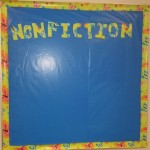

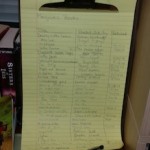
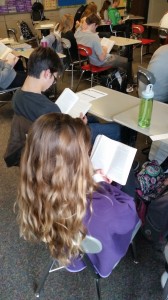
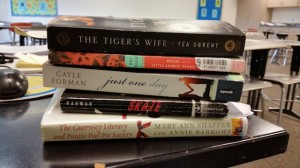
 Hattie Maguire is an English teacher and Content Area Leader at Novi High School. She is spending her fourteenth year in the classroom teaching AP English Language and Composition, English 10, Debate, and Practical Public Speaking. She is a National Board Certified Teacher who earned her BS in English and MA in Curriculum and Teaching from Michigan State University.
Hattie Maguire is an English teacher and Content Area Leader at Novi High School. She is spending her fourteenth year in the classroom teaching AP English Language and Composition, English 10, Debate, and Practical Public Speaking. She is a National Board Certified Teacher who earned her BS in English and MA in Curriculum and Teaching from Michigan State University. As teachers, we all have students who are compliant and willful, who will readily produce whatever output we ask or demand of them to please the teacher or earn a desired grade. There is no question that narrative and non-fiction writing are critical skills that must be taught explicitly at all levels every year. Increasingly, however, in an era of online publishing and digital content production on social media sites, students need to know that whatever they are asked to generate will have a meaningful audience and make a difference to someone. In 2014, kids have never known a world where they haven’t been able to reach out around the globe in seconds and make an impact with words, pictures, and video on Instagram, Twitter, or Facebook. The ability to publish at the click of a button has provided a liberating opportunity for students to receive swift feedback and effectively measure the impact their writing has on their intended audience.
As teachers, we all have students who are compliant and willful, who will readily produce whatever output we ask or demand of them to please the teacher or earn a desired grade. There is no question that narrative and non-fiction writing are critical skills that must be taught explicitly at all levels every year. Increasingly, however, in an era of online publishing and digital content production on social media sites, students need to know that whatever they are asked to generate will have a meaningful audience and make a difference to someone. In 2014, kids have never known a world where they haven’t been able to reach out around the globe in seconds and make an impact with words, pictures, and video on Instagram, Twitter, or Facebook. The ability to publish at the click of a button has provided a liberating opportunity for students to receive swift feedback and effectively measure the impact their writing has on their intended audience. We all know that technology tools are constantly evolving and changing. What will remain immutable, however, is the architecture of story–problem, solution, characters, and setting. As long as we enable our students to make choices about the multi-modal output they would like to try, they will be motivated to learn the fundamental writing skills they need to grow and develop as writers. Students are empowered by both multi-media tools and the allure of a wider audience. Their work will have meaning for the maximum number of people possible, as it should. Kids care about writing and creating when they know people pay attention to and care about their work, that their writerly voices will be heard.
We all know that technology tools are constantly evolving and changing. What will remain immutable, however, is the architecture of story–problem, solution, characters, and setting. As long as we enable our students to make choices about the multi-modal output they would like to try, they will be motivated to learn the fundamental writing skills they need to grow and develop as writers. Students are empowered by both multi-media tools and the allure of a wider audience. Their work will have meaning for the maximum number of people possible, as it should. Kids care about writing and creating when they know people pay attention to and care about their work, that their writerly voices will be heard.
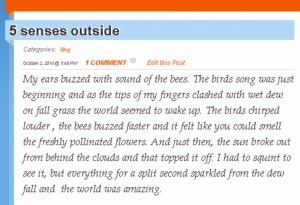
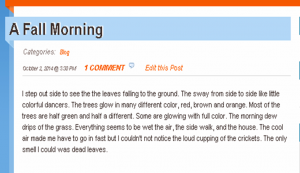
 Beth Rogers is a fifth grade teacher for Clarkston Community Schools, where she has been teaching full time since 2006. She is blessed to teach Language Arts and Social Studies for her class and her teaching partner’s class, while her partner teaches all of their math and science. This enables them to focus on their passions and do the best they can for kids. Beth was chosen as Teacher of the Year for 2013-2014 in her district. She earned a B.S. in Education at Kent State University and a Master’s in Educational Technology at Michigan State University.
Beth Rogers is a fifth grade teacher for Clarkston Community Schools, where she has been teaching full time since 2006. She is blessed to teach Language Arts and Social Studies for her class and her teaching partner’s class, while her partner teaches all of their math and science. This enables them to focus on their passions and do the best they can for kids. Beth was chosen as Teacher of the Year for 2013-2014 in her district. She earned a B.S. in Education at Kent State University and a Master’s in Educational Technology at Michigan State University.